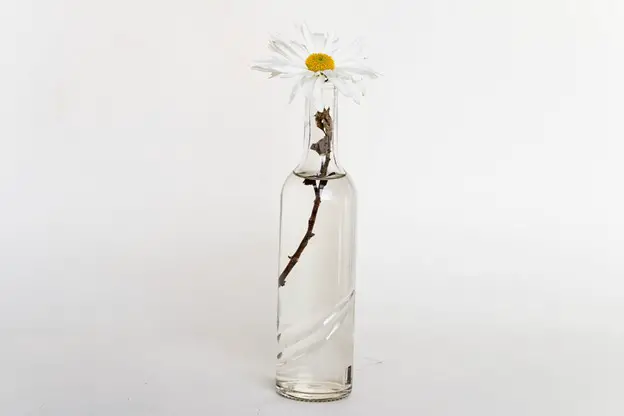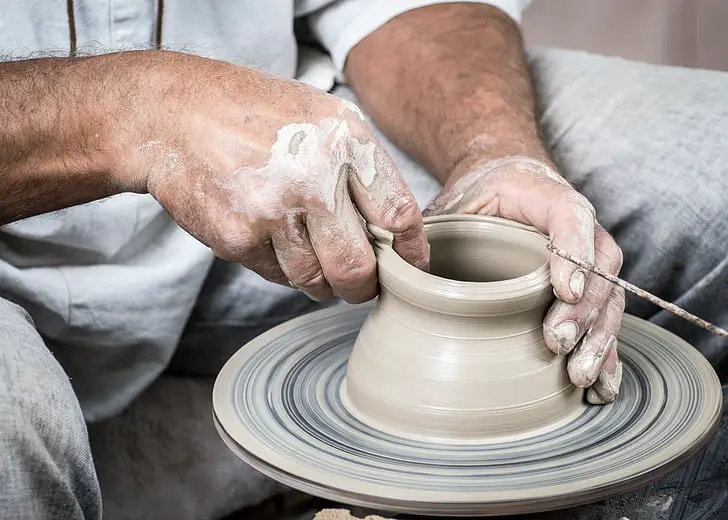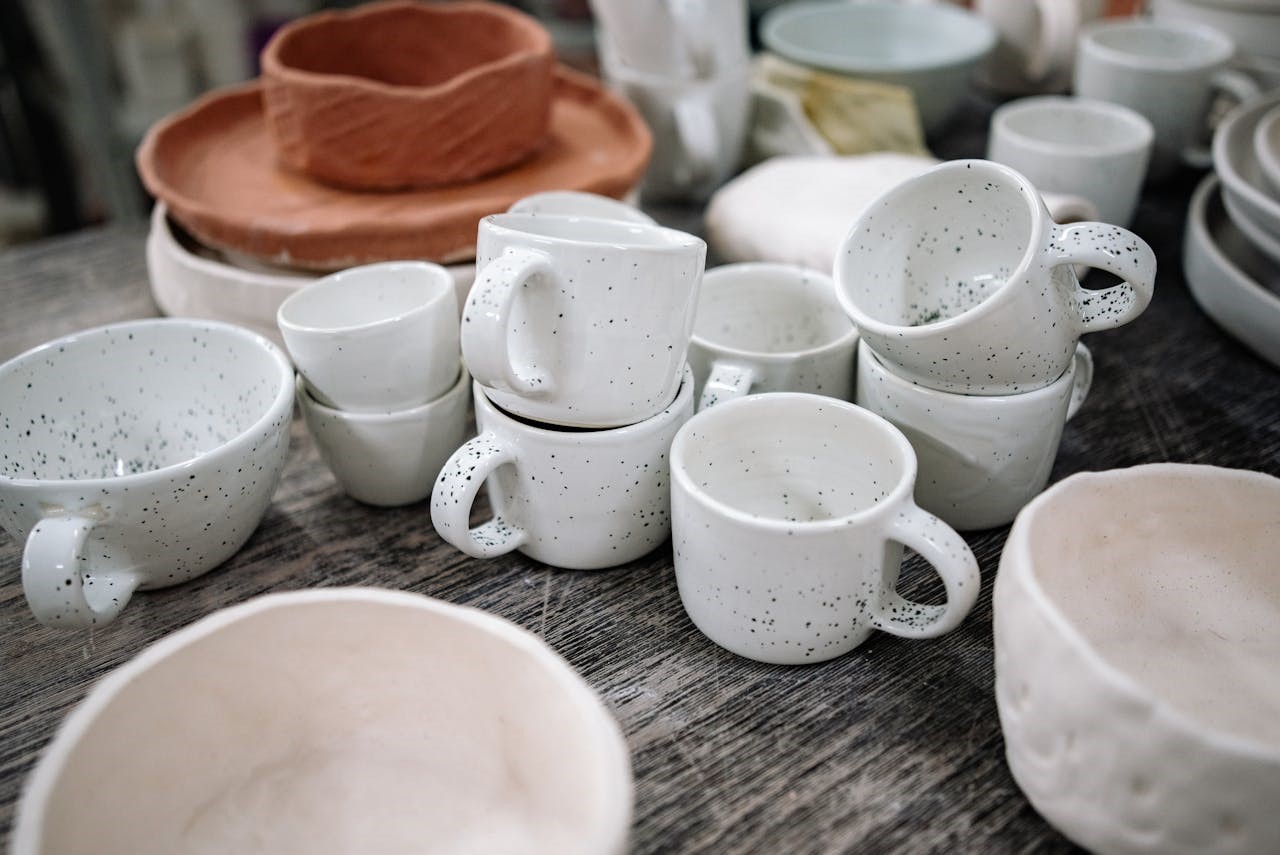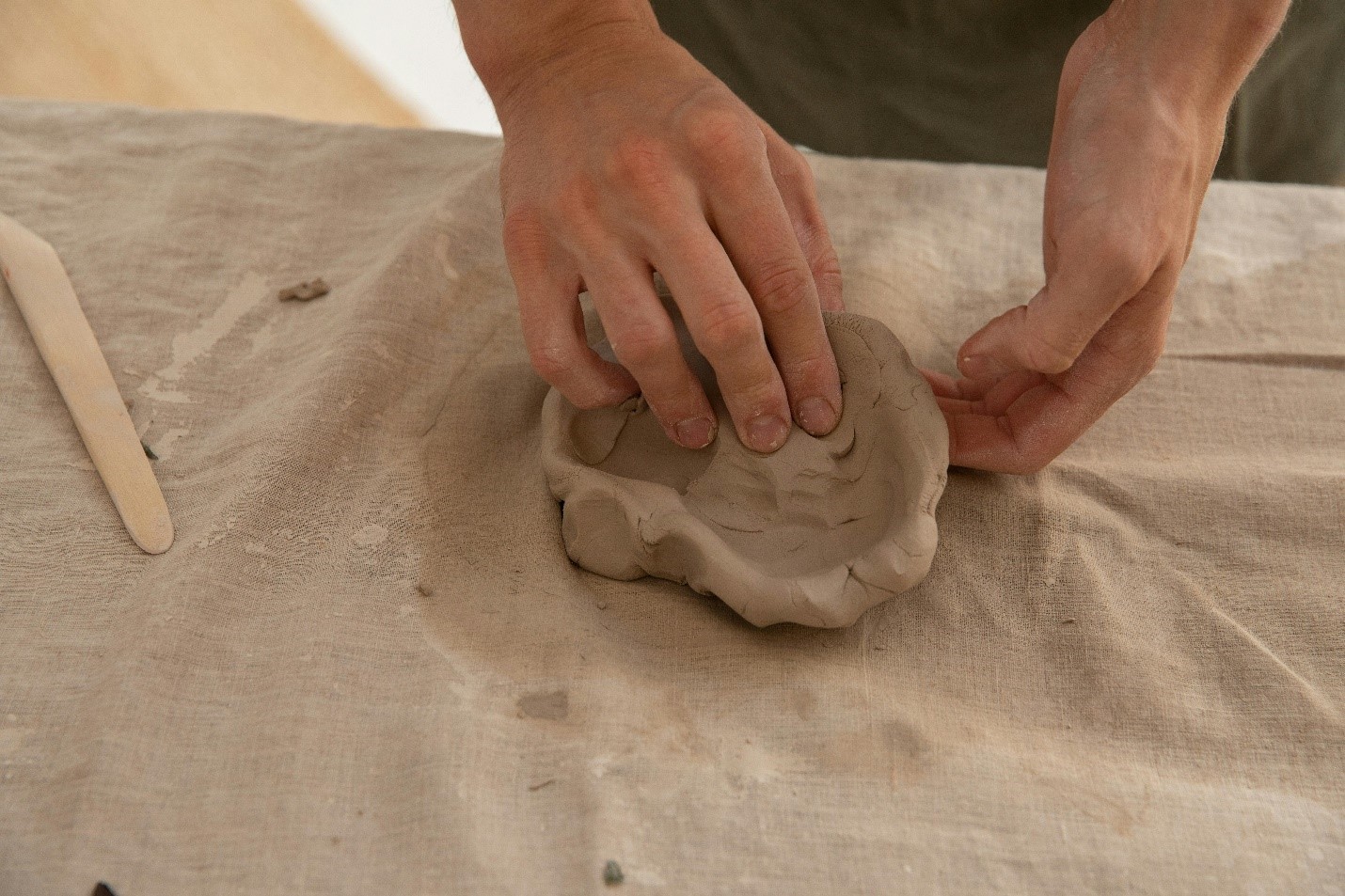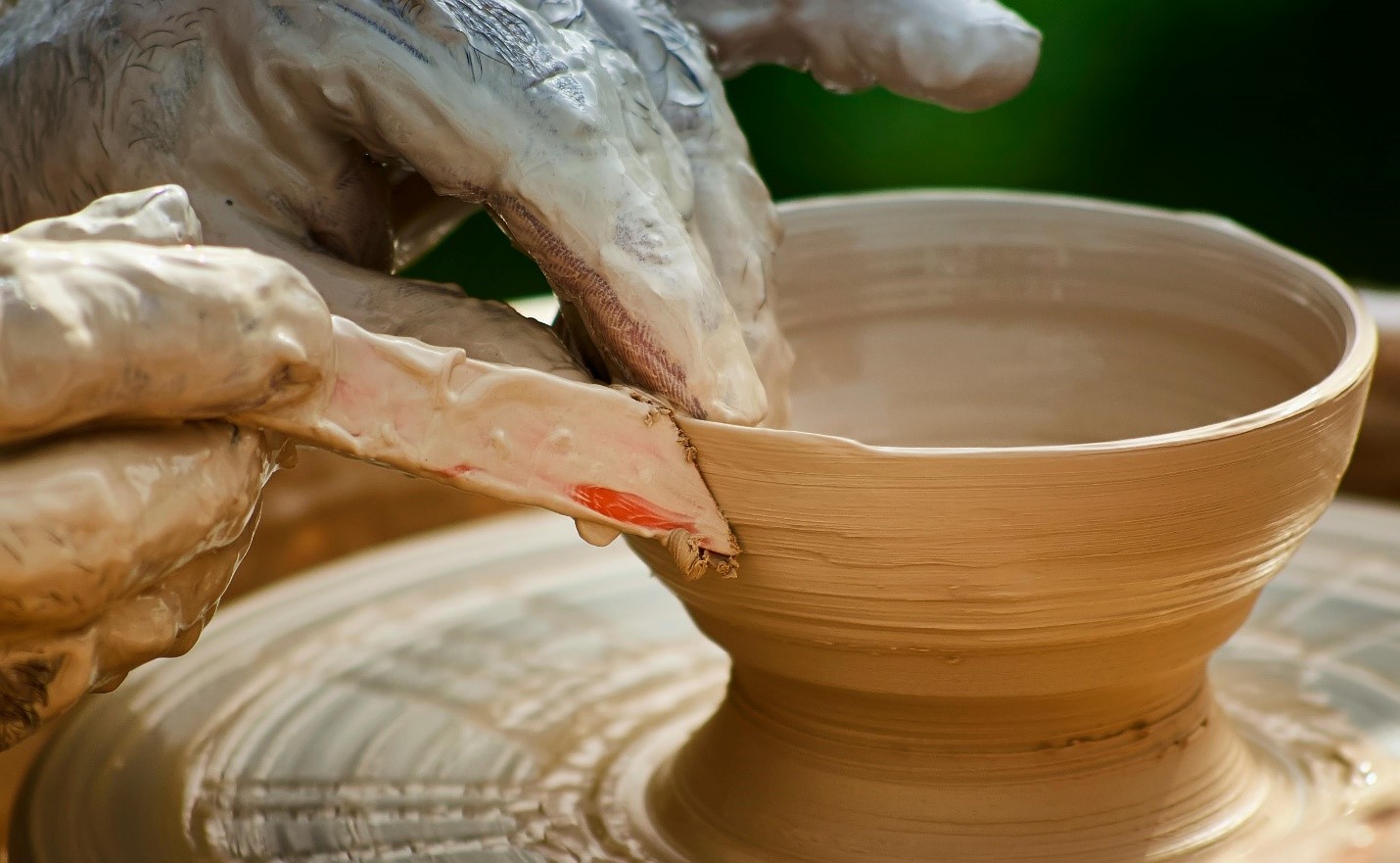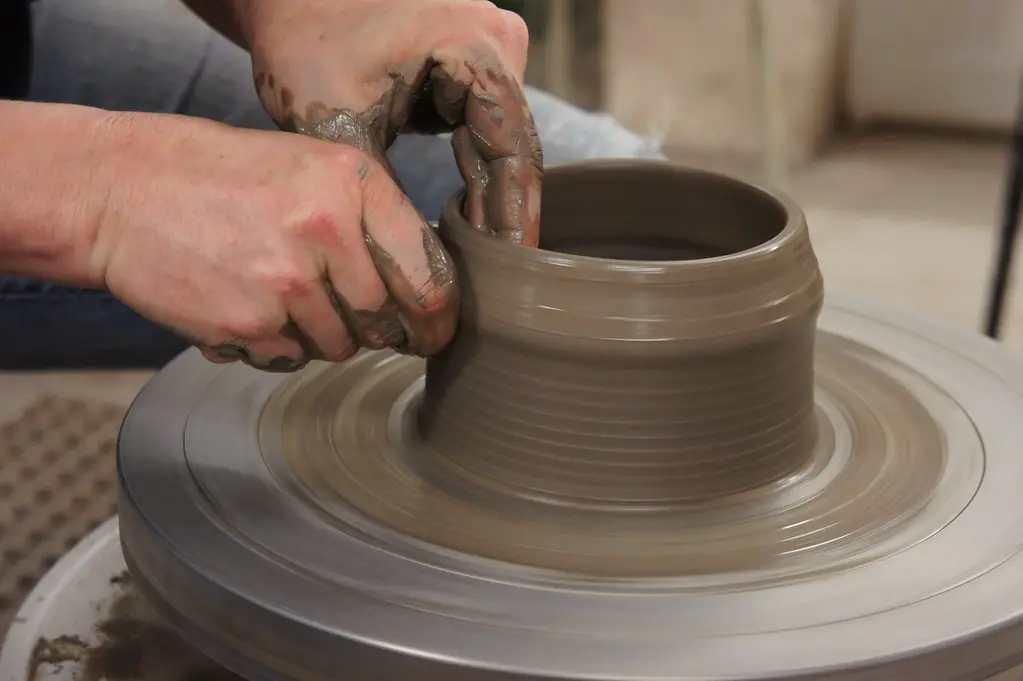As a creative individual, working with air-dry clay can involve the use of multiple surfaces. Air-dry clay as a material is very different when compared to polymer clay or regular clay. This clay can be easily paired with several materials to create some amazing sculptures. However, it isn’t easy to pick the right material to stick the air-dry clay to. In some instances, the clay can easily stick to the surface. With others, it might not stick at all.
Most crafters tend to use glass as a base to craft their models. This is especially true when crafting vases or drinking glasses. But, what if the clay sticks to this glass surface and you cannot separate the base from the air-dry clay after drying out?
Let us check out whether air-dry clay actually sticks to the glass.
Can Air-Dry Clay Cling to Glass?
One can use air-dry clay to craft a beautiful glass vase or drinking glass. However, if you are not good at molding, you can use a glass base to create a perfect shape. However, in order to mold the clay perfectly, the air-dry clay must stick well to the glass. In addition, it must not stick too well to ensure that it can be separated post drying.
In general, air-dry clay sticks perfectly to the glass material. If you happen to gently wet the glass before pressing the clay on it, the air-dry clay will stick well. However, this will make the air-dry clay stick to the glass even post drying. So, if you don’t want the base glass to stick to the air-dry clay, make sure you don’t wet it anymore. This will help with the easy removal of the base.
Regardless, this stickiness with water isn’t long-lasting or durable. So, in case you are seeking a permanent and durable connection between the air-dry clay & the glass, make sure you use glue for the same. A great option for reliable glue that you can use is Elmer’s Liquid Glue. This glue is washable, safe, & non-toxic in nature.
If you find that using glass bases is a bit risky to be used with air-dry clay, you can also use other options such as plastic.
Using plastic bases to stick to air-dry clay
In case you are seeking an alternative for glass that won’t break off easily, plastic is best for serving as a base. The best thing is it is cheaper when compared to plastic. If you plan on crafting a mug or glass, you can make use of plastic cups o serve as a reliable base.
Air-dry clay perfectly sticks to the plastic base. Additionally, you can pat some water onto the plastic base to make your air-dry clay stick better onto the surface. It will continue sticking to the surface made of plastic even after the clay has dried out. If your plastic base’s surface is rough, the air-dry clay will stick better and longer.
For crafters that are facing difficulties in sticking the air-dry clay to the plastic surface, you can consider roughing up the plastic surface with the use of grit sandpaper. This will provide the air-dry clay a durable surface to stick to. It comes in especially handy when the plastic you are using has a smooth surface.
Alternatively, air-dry clay sticks pretty well to wooden surfaces. However, if the wood was treated or sealed in any manner, the clay might not stick as well. You can add some more water to your air-dry clay to help it stick thoroughly from end to end. Air-dry clay sticks well onto wooden surfaces even if it has completely dried out.
Do not use wooden bases that haven’t been sealed using oil anything similar. Instead, you can rough up the wooden surface with the help of sandpaper to provide the air-dry clay a durable surface to stick to.
Does Air-Dry Clay Cling to Cardboard?
One thing that is problematic with using cardboard as a base for air-dry clay crafting is the fact that it can become unstable and deform easily. This is especially after it comes in contact with the water present in air-dry clay.
Apart from that, the clay will only stick to the board if it hasn’t been coated or laminated. Also, remember that air-dry clay inherently doesn’t stick well onto the cardboard body. Plus, using cardboard as a base might make it deformed and mushy due to the water seepage or water absorption.
As compared to cardboard, there are better alternatives such as wood, paper mache, or Styrofoam.
Does Air-Dry Clay Cling to Metal?
In general, metal isn’t the best material for crafting purposes. This is especially for beginner crafters. It is difficult to use with air-dry clay. Plus, you might also end up hurting yourself. Remember that air-dry clay doesn’t clay to metallic surfaces that are very flat. However, it can surely be used with rough metal wires or coarse metallic surfaces.
With the use of water, you can help the air-dry clay stick better to the metallic base. So, if one tries to stick the air-dry clay on a clean metallic sheet, there would be a lot of difficulty in achieving success. Basically, air-dry clay requires something rough to cling to. And, anything that is way too smooth might not be perfect for serving as a base for air-dry clay molding.
Here are some base materials used for air-dry clay crafting and whether they are great for sticking to the clay.
Base Material |
Efficacy with Air-Dry Clay |
| Glass | Ideal for using as a base but could come with risks of breaking |
| Plastic | It might not stick if the plastic is very smooth; it needs roughing with sandpaper |
| Wood | Ideal for sticking to air-dry clay but might not work if the wood is treated or sealed |
| Cardboard | Not ideal for use as a base as it might get mushy and unstable |
| Metal | Ideal for use as a base but requires a rough surface or a bit of water to stick better |
| Styrofoam | Perfect for sculpting air-dry clay |
Conclusion
Apart from this, you can make use of Styrofoam as a base for air-dry clay sculpting. However, keep in mind that Styrofoam can only be perfect for crafting with the use of air-dry clay. But, using it with normal clay might not be ideal because it has to be fired. Styrofoam might burn during baking. In short, glass is an ideal base when used in the right way for air-dry clay crafting. But, there sure are better options to perfect your crafting techniques.

